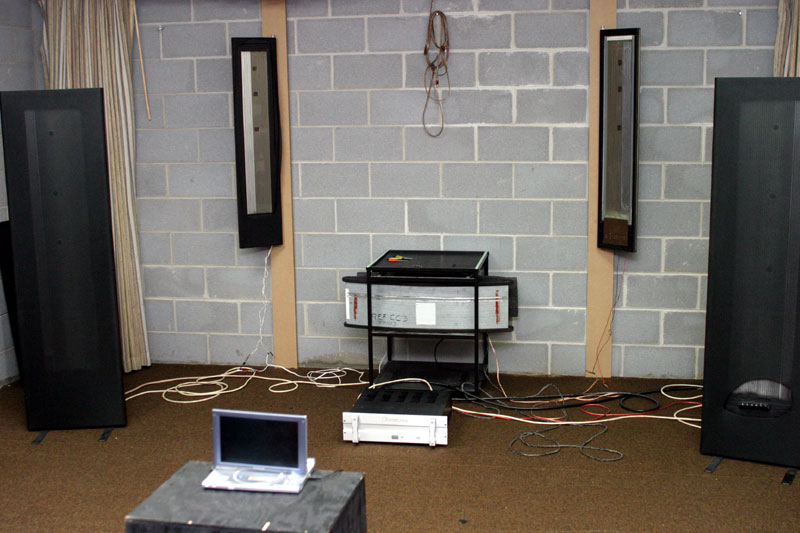Magnepan's Tri-Center: The Sound of Things to Come for Home Theater?
agnepan has both an interesting concept and product in what it's calling the Tri-Center. The concept is to improve home-theater sound by introducing phase information to the center channel in order to help listeners sort out complex passages that are mixed to mono. To this end, Magnepan has begun combining a pair of its MC1 wall-mounted speakers (formerly called the MGMC1, $850/pair) with a CC3 center-channel speaker ($995) as a single product. The MC1s are mounted on the sides of the monitor or screen, while the CC3 sits below it. All three are fed the receiver's or processor's center-channel information, so there is no electronic trickery involved.
As I would expect, the Tri-Center alone did indeed produce a more spacious center image that was less dependent on the listener's position. Adding the front MG1.6 speakers certainly made a difference, increasing the sense of spaciousness, although at some points they seemed superfluous because the Tri-Center filled in effectively. The single CC3 sounded good but was restricted laterally in comparison, the sound obviously coming from a central point. Magnepan makes other claims for the Tri-Center, namely that it improves dynamic range, lowers distortion, makes speech more intelligible, and improves power response -- the sum of the sonic energy in the room. This last claim was certainly true, as the system sounded more theater-like in its immersive spread. The Tri-Center will require a stout receiver or, better yet, a separate power amplifier. The MC1s are run in series, and then in parallel with the CC3, which makes for a 3-ohm load that will annoy many receivers and cause anemic ones to shut down. There is also the $1845 cost of the three speakers and the added space to consider. However, because the MC1s hang on the wall flanking the monitor or screen, they don't gobble up space in a cabinet or require special stands. They also look good (with their grille cloth in place, that is). Will the Tri-Center concept convert to Tri-Center sales?
If Magnepan owners hear it, it will. |

